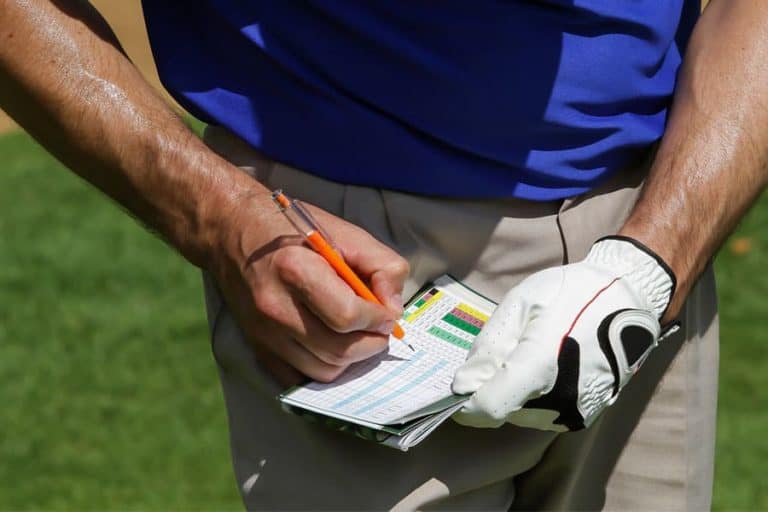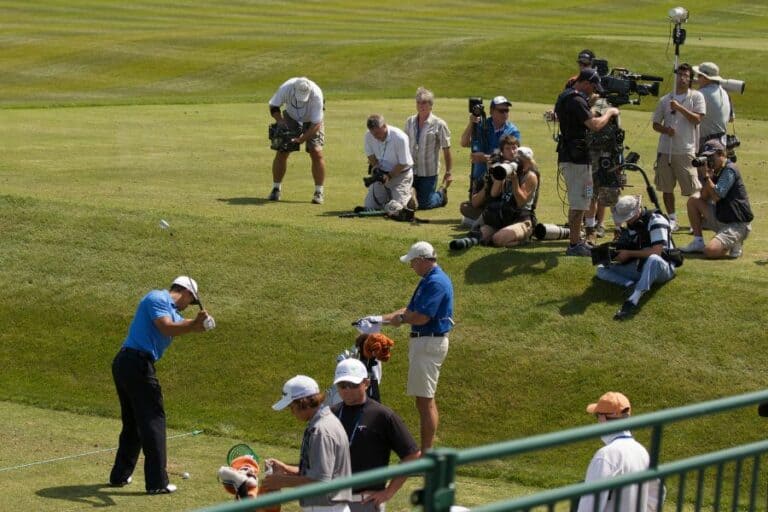How to Swing a Golf Club: A Step-by-Step Guide
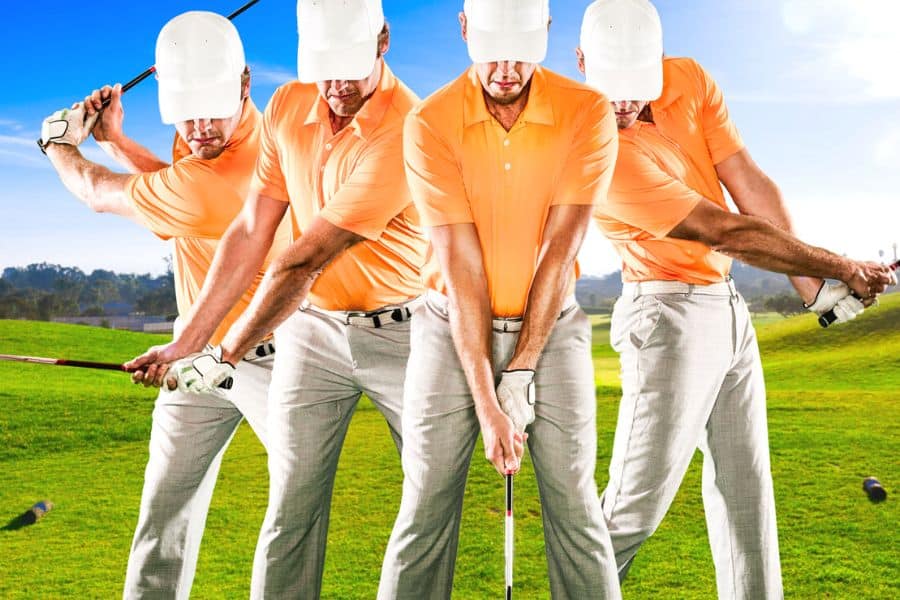
Learn the proper technique for swinging a golf club with our step-by-step guide. Improve your golf game and hit longer, straighter shots with expert tips and advice.
Golfers everywhere know that a good swing is key to making accurate shots and sinking those putts.
However, many golfers struggle with inconsistency, often due to incorrect form.
This article will break down the fundamentals of the perfect golf swing step-by-step and provide detailed information on every stance performed during the motion.
Understanding the Golf swing fundamentals
Below are the primary golf concepts that one must be sure about before understanding the mechanics of the basic golf swing.
The two swing planes
- One of the most preferred swinging techniques is known as the one-plane swing. In this swing plane, your club follows an identical path during both backswing and downswing.
- The two-plane swing is a complex yet rewarding technique. The backswing consists of more elevation, and letting your hands drop during the transition makes the downswing plane flatter. This approach leads to greater speed in your swings as well as increasing distance for improved performance on the course.
The body position as the source of your power
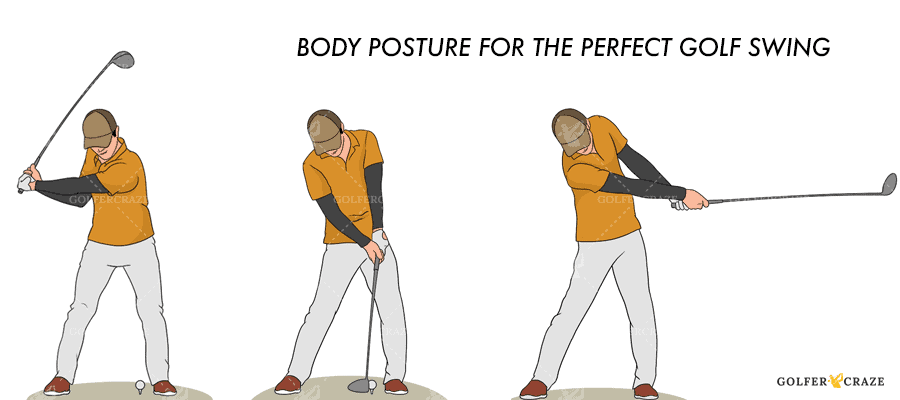
- You must move your whole body as one unit to create maximum power and precision in your golf swing. Trying to generate force with just the arms will not get you far. Instead, it might even lead to inaccurate contact.
- When you coil your body in a spring-like fashion during the backswing, you will generate massive power. This leads to optimal speed.
- One of the most common mistakes golfers make is to lift their head during the swing. This interrupts the flow and affects accuracy. While swinging a golf club, a golfer must keep their head down and look at the ball throughout their swing.
A step-by-step guide: How to swing a golf club?
Here is a detailed guide on how to swing a golf club properly:
Step 1 – Setup and address
The setup position is the first and most important step in any golf swing. Keep the following points in mind during the setup phase:

- To ensure accuracy, begin your golfing stance by positioning your body parallel to the target line for straight shots.
- Ensure your alignment is precise. Your feet and shoulders should line up in a straight row to ensure that the imaginary line running from one shoulder to the other, and back foot to the front foot, all points right at your target. This is known as the ‘square’ alignment.
- You must maintain balance and stability while keeping your arms close to your body.
- Make sure you have a light grip, turn your head back slightly to look at the ball, and keep your feet parallel.
- Keep your back upright. It should maintain its angle throughout the swing. Allow your swing to rotate around this straightened spine for maximum efficiency.
- Moderately flex your knees, and keep your leading shoulder lower than the trailing shoulder. This will ensure you have a proper posture while swinging.
- Once you have straightened your back, angle your upper body slightly forward for an easy rotation back to the center of the ball. This will help make returning to your club effortless and natural.
Step 2 – Master the golf grip
Gripping the club correctly is a critical component of golf, as it determines which direction your shots will fly. Thus, how you hold your club can be essential for successfully hitting shots in your desired direction.
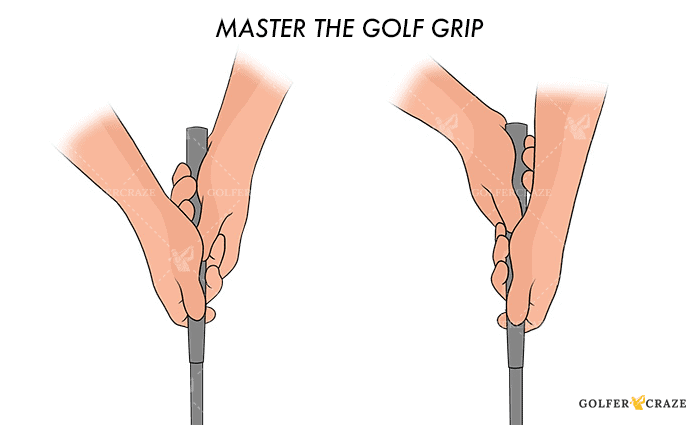
- At the address, ensure your clubface is squared up to the ball by using a neutral grip.
- The highest hand/lead hand is placed on the golf handle.
- Make sure that only the knuckles of your index and middle fingers of the leading hand are visible.
- Subsequently, the trailing hand/lower hand is added to the grip for better stability.
- Position your trailing hand below your leading hand.
- Ensure that only the knuckles of the index finger and the middle finger of the trailing hand are visible.
Three renowned golf grip techniques are frequently utilized to enhance a player’s performance: the overlapping (Vardon grip), interlocking, and ten-fingered grip (baseball grip).
Step 3 – The correct ball position
Positioning the golf ball correctly impacts the outcome of the swing. If the ball is not positioned correctly, it can lead to inaccurate shots and decreased distance.
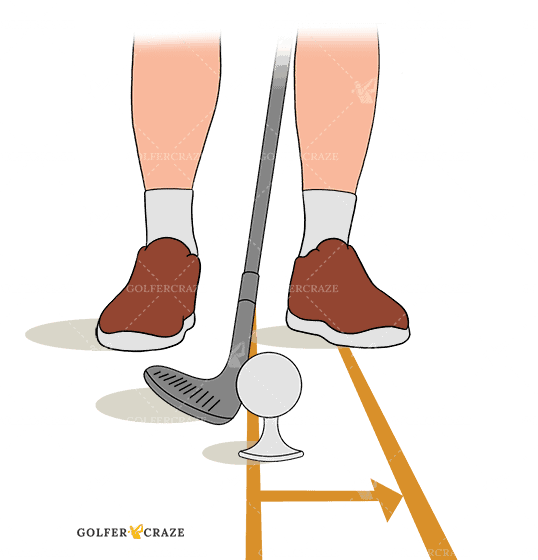
- The ball position should be aligned as per your choice of club. For instance, the ideal positioning for middle clubs should be slightly in front of the center and farther forward with longer clubs. With shorter clubs, a closer to the center position is advised.
- When swinging, place your larger clubs, like hybrids or drivers, near the front of your stance and smaller clubs, like irons, more to the center.
- To achieve the optimal stance, your feet should be wider than shoulder width, align your front foot slightly ahead of the ball and rest your club near the center of your body.
- The left foot should be slightly ahead of the ball for right-handed golfers.
- If you’re a left-handed player, your right foot will be positioned nearer to the hole than where the ball is located.
- Position yourself close to the ball such that your arms can stay straight and relaxed while the middle of the clubface connects with it.
- Do not get so close that you need to bend your elbows or stand too far away where your arms are stretched out to their limit.
- Position your upper body slightly away from the target with your torso tilted, but not too much.
Step 4 – The final stroke
The start of your swing will influence its success.
- Start by slightly turning your torso away from the ball while coiling your shoulders to produce the power required for the downswing.
- Achieve a smooth and seamless takeaway with minimal arm movement.
The golf backswing technique
The backswing is a major component of the full swing. Hence it is essential to perfect it.
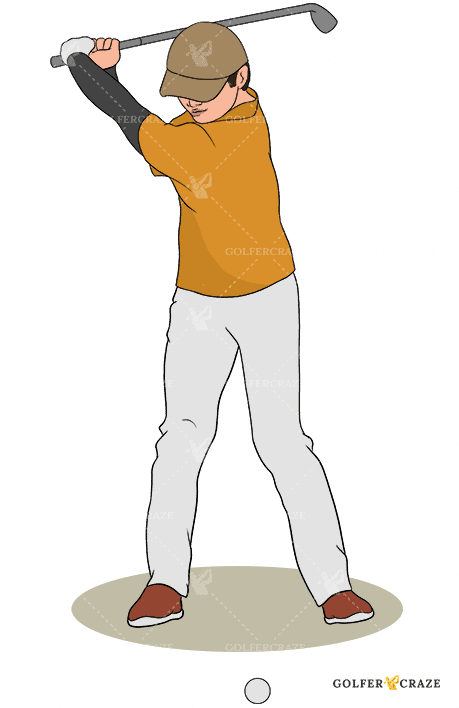
- The backswing should be a one-piece motion, with the arms and torso rotating in tandem.
- Initiate the movement by extending your arms backward in a straight line, holding them close to your rear leg. Furthermore, considering you are a right-handed golfer, keep your front arm (left arm) straight as you perform this motion.
- As the club face pins towards the back, the shaft turns almost parallel to the ground.
- As you take your backswing, rotate your torso and transfer the weight from the ball of your front foot to that of your rear.
- As you reach the top of the backswing, turn your shoulder away from the ball while coiling your body completely. This helps prepare the body for an impactful downswing.
- At the top of the backswing, the club head should be pointed over your right shoulder.
- The club should be at a right angle with your front arm.
- Begin to clock your wrist as you move your arms parallel to the ground.
- Continue to push hands down until the club faces down the target line.
- Make sure that your head remains still during the backswing.
- Before you transition from the backswing to the downswing, hold the backswing at the top at the 11 o’clock position to stabilize your body for solid contact.
The downswing motion
A smooth downswing is essential to produce ideal launch conditions in the desired direction.

- The downswing should begin with a slow tempo and accelerate the momentum until it reaches its peak speed upon contact.
- Considering you are a right-handed golfer, initiate your downswing with your right shoulder and right hip drive simultaneously in the direction of the ball.
- Ensure your arms move downwards in such a way that you achieve peak speed at impact.
- Allow your lower body to lead the swing. Thus, keep your hips ahead of your shoulder.
- As you downswing, transfer your weight from the ball of your right foot (trailing foot) to your left foot (front foot).
- Continue to flex your left knee (front knee) for a smooth weight transfer.
- On impact, your hands should be ahead of the ball, and the shaft tilting in the ball’s direction.
The importance and steps to follow through
One of the most common golf swing errors is not completing the swing.
- Not following through with your swing can seriously hinder its accuracy and power.
- Your finish position should be such that your body is twisted 90 degrees, your belt buckle points toward the target, and the club is positioned behind you.
- Your weight should be held on your lead foot while your rare foot is turned onto your big toe.
- This position should be maintained as you watch the ball fly the distance.
Golf swing tips
It’s important to follow a consistent basic motion if one needs to master the golf swing. Here are 8 tips to help you make the right stroke:
- Practice: It’s important to find a rhythm that feels comfortable and allows you to focus on proper technique.
- Target: Visualizing the desired outcome before hitting the shot can help you stay focused and increase the chances of a successful shot.
- Right club: Choosing the appropriate club based on the shot’s distance and lie is critical to making accurate shots.
- Golf grip: Proper grip is essential for control and can greatly impact the direction and trajectory of your shots.
- Correct posture: Maintaining good posture will help keep you balanced and centered during the swing.
- Hands out of the takeaway: The takeaway is an important part of the swing and keeping your hands out of it can ensure a smooth and consistent swing.
- Aim: Taking a moment to aim and align yourself with your target can greatly increase the chances of a successful shot.
- Hold the finish: Hitting the shot confidently and holding the finish can help you maintain balance and control and make it easier to assess the shot.
In the video below, PGA Golf coach Rick Shiels shows the easy and simple way to swing a golf club, with tips on how to grip the golf club and how to stand to the golf ball.
Conclusion
A great golf swing should be powerful and accurate. Thus, it takes immense dedication to perfect each component of the golf swing. Practicing the steps mentioned above or referring to golf swing tips will help you have a successful golf session.



